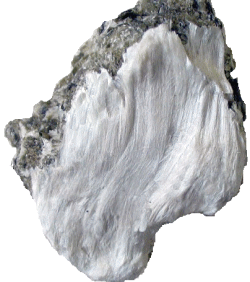
October Editorial
Asbestos may be closer to home than you think.

October Editorial
Asbestos may be closer to home than you think.
|
|
Asbestos is a fibrous silicate mineral which is both malleable and heat-resistant. There are six different types of asbestos which are commonly known by their colour. Thus we get 'white asbestos', 'blue asbestos', 'brown asbestos' and so on. Asbestos has been known for centuries and used for a number of different purposes. For example, it was considered an excellent building material because of its insulation properties, strength and resistance to chemical erosion. But by the beginning of 20th century health-related concerns began to be raised. It was discovered that asbestos is responsible for a number of diseases and by the 1980s and 1990s an increasing number of countries banned outright, phased out, or heavily restricted the trade and use of asbestos. This is because it is now known that prolonged exposure to asbestos can cause malignant lung cancer, mesothelioma (a rare type of cancer which develops within the protective lining of many organs) and asbestosis (a chronic inflammatory and fibrotic medical condition affecting lungs) and other serious health problems. In 2007 a geological surveillance map was produced which mapped where asbestos occurs naturally in the USA. The map shows known deposits as well as prospecting sites which were never developed commercially. The largest and most closely-grouped sites were found in California and the Washington state in the west and at the border of Pennsylvania and New Jersey in the east. A large number of closed mines and prospecting sites are shown in southern Arizona. There are areas in Virginia and North and South Carolina, and also multiple prospecting sites in northern Georgia. The surveillance map shows relatively few areas in the central USA and no naturally occurring asbestos in Nevada. (http://www.atsdr.cdc.gov/noa/docs/usamap.pdf). However, it appears that this map is not completely accurate. Asbestos minerals may be more widespread than previously thought. Recently natural asbestos deposits were found accidentally in Boulder city in supposedly asbestos-free Nevada in the path of a construction zone to build a multi-million dollar highway called the Boulder City Bypass. Boulder City is only 26 miles south of Las Vegas, the most populous city in the state. 'These minerals were found where one wouldn't expect or think to look', said Rodney Metcalf, Associate Professor of Geology at the University of Nevada, Las Vegas, and co-researcher of the study. '[Asbestos] is like a precious metal deposit, it forms at the confluence of several geologic features, which vary at each location', he added. In the case of Boulder City it was the interaction of groundwater with rock salt and a cooling magma body deep below the earth’s surface which formed the fibers and created this type of asbestos. Later geological movement brought the rock to the surface. Like its manufactured counterpart, naturally-occurring asbestos can also be harmful and difficult to control, especially when it becomes dust and is transported by the wind. And yet, some naturally-occurring deposits of asbestos are not regulated or labeled toxic under federal law, though they can be as dangerous or even more toxic to humans than worked asbestos. While the Boulder City bypass construction has been halted, the researchers are investigating the amount of asbestos that is in the soil in the construction area, its toxicity to humans, and how far it can be transported by wind. The accidental discovery of asbestos in Nevada suggests that there may be a lot of areas in the world that could have asbestos that we don't know about. The results from this study were presented at the '2014 GSA (The Geological Society of America) Annual Meeting in Vancouver, British Columbia (19–22 October 2014)'. https://gsa.confex.com/gsa/2014AM/webprogram/Paper250494.html |
| _______________________________ | ||||
| Home | | | Shopping | | | Database |
© Biscuit Software 2004-2015
All rights reserved